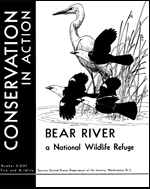United States Fish and Wildlife Service

United States Fish and Wildlife Service: Publications
Date of this Version
2018
Citation
Science of the Total Environment 619–620 (2018) 460–469.
Abstract
Seabirds are often cited as sentinels of the marine environment, but are rarely used in traditional ocean and coastal contaminant monitoring. Four classes of persistent organic pollutants (POPs, n=68) and three trace elements (mercury, selenium, and arsenic) were measured in the eggs of California least terns (Sterna antillarum browni), caspian terns (Hydroprogne caspia), double-crested cormorants (Phalacrocorax auritus), and western gulls (Larus occidentalis) that nest in the Southern California Bight. Building on a periodic five year regional monitoring program, we measured contaminant exposure and assessed the utility of seabirds as regional contaminant biomonitors. We found that the eggs of larger,more piscivorous species generally had the highest concentrations of POPs and trace elements while California least terns had the lowest concentrations, except for mercury which was higher in least terns. As expected, DDT concentrations were elevated near the Palos Verdes Superfund site. However, we also detected a previously unknown latitudinal pattern in PBDE concentrations in least terns. POP congener profiles also confirmed differences in contamination in urban least tern colonies closest to urban centers. Though toxicants were at detectable levels across species and sites, concentrations were below those known to cause adverse effects in avian taxa and are steady or declining compared to previous studies in this region. Our results suggest that regional seabird monitoring can inform site-specific remediation and support management and protection of regionally-threatened wildlife and coastal systems. Integration of seabird contaminant data with traditional sediment, water, bivalve and fish monitoring is needed to further our understanding of exposure pathways and food web contaminant transfer.


Comments
U.S. government work.